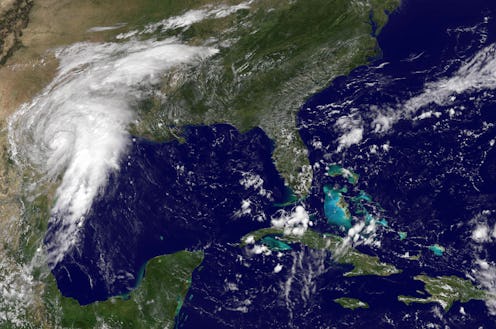News
Tropical Storm Hermine May Cause Water Damage
The United States' Gulf Coast prepared for Tropical Storm Hermine on Thursday, Sept. 1 as strong winds and heavy rain started in Florida, the first state on the storm's path. Hermine will hit states in the South and Northeast over the course of the weekend and could gain enough strength to become a hurricane, which is highly likely. As the South prepares for the storm, how will Tropical Storm Hermine affect the Gulf Coast? Update: On Thursday afternoon, the National Hurricane Center announced that Hermine had strengthened from a tropical storm to a hurricane.
Hermine has the potential to turn into a hurricane, which would make it the first hurricane landfall in Florida since Hurricane Wilma in 2005. The state prepared for the storm on Aug. 31 as Gov. Rick Scott issued a state of emergency in 42 counties. In his statement, Scott said:
Last night, hurricane and tropical storm watches were issued along Florida's Gulf Coast from Pasco County to Gulf County. We also learned that the National Hurricane Center expects Tropical Depression Nine to become a Tropical Storm sometime today. It is crucial that every Floridian has a plan in place to ensure their families, homes and businesses are fully prepared.
Hurricane warnings have been issued in the north of Florida from the Gulf Coast, extending as far inland as Tallahassee, according to the Weather Channel, which added that winds could reach at least 74 mph.
AccuWeather's Hurricane Expert Dan Kottlowski said, "Hermine could become a hurricane before it makes landfall. We expect the storm make landfall north of Tampa, in the Big Bend of Florida during late Thursday night into early Friday morning." The Tropical Storm will hit Florida's Gulf Coast with heavy rainfall, strong winds, the potential for heavy flooding and tornadoes through Friday, according to AccuWeather. The threat of tornadoes is specifically focused in the north of Florida and southern parts of Georgia.
Forbes noted that the storm's first day could bring a "landfalling tropical cyclone," which could become a "category 1 hurricane." It also pointed out that the biggest threat associated with the storm in Florida, Georgia, and along the Gulf would be the accumulated water levels. The National Hurricane Center noted that the storm could produce "storm total rainfall accumulations of 5 to 10 inches over portions of northwest Florida and southern Georgia through Friday, with possible isolated maximum amounts of 20 inches," Forbes reported. Flooding along coastal regions has become an increasingly problematic crisis associated with climate disasters.
Along the Gulf, accumulated water levels could lead to flooding on the coastline. The other weather conditions such as heavy winds and tornadoes might cause falling trees, power outages, and could damage homes, according to the Weather Channel.
